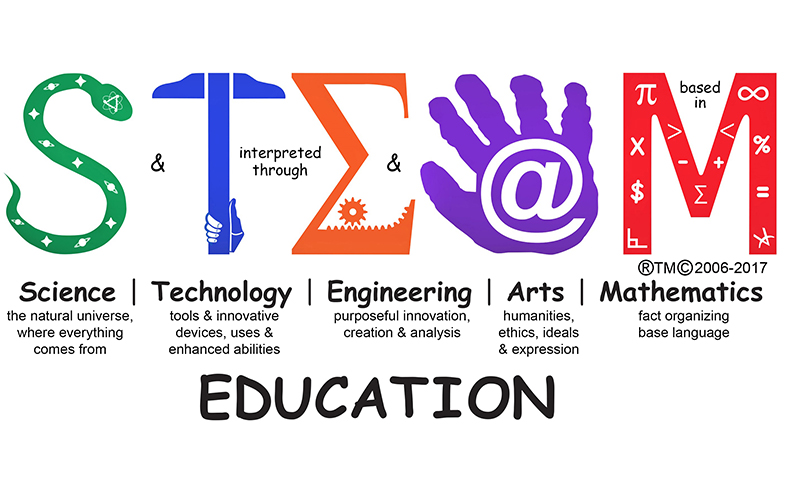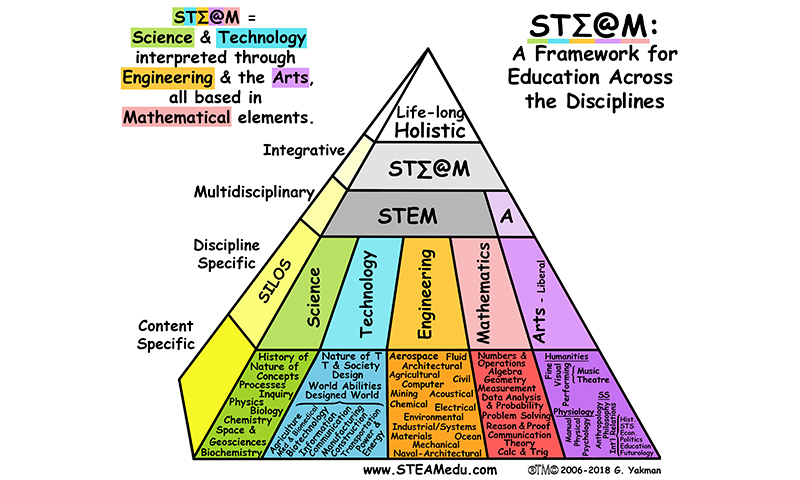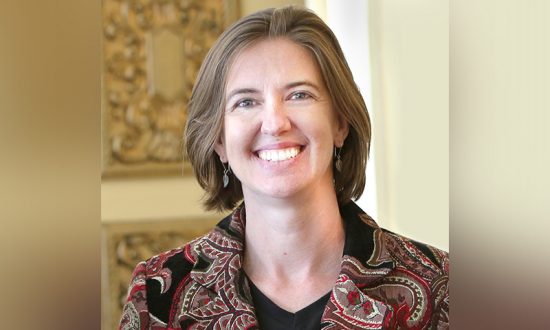Georgette Yakman is the founding researcher of the STEAM educational framework. She developed the framework in 2006 and began implementation in 2007 as an MS/HS Engineering & Technology teacher. She was soon named Teacher of the Year with a regional technological business group and shortly after became president of her state teaching organization. She transitioned from teaching to offering professional development for educators and within a couple of years was invited to Korea where her platform was adopted across the nation in 2011. She was then awarded a Big Ideas Fest recognition and recorded talk by the Gates and Qatar Foundations. As of January 2019 educators from 37 countries have trained with her company. Prior to her last 12 years working in education, she worked as an architectural designer and VP of a clothing company in the US and Ecuador and has been involved in global music and festival productions. She holds a Clothing and Textiles B.S. and an Integrated STEM post master’s degree all from Virginia Polytechnic.
STEAM helps organize subject matter, instead of ‘adding another thing.’ The foundational research shows how the spectrum of the liberal arts contextualizes STEM. STEAM is about more than converging the fine arts and design thinking into STEM fields. The liberal arts are, the ‘who & why,’ the reasoning, to the ‘what & how’ of STEM.
Engineering is often seen as an important forward-thinking field strongly supported by math and science and resulting in using and producing technologies. This is true, however, how society members see needs, wants and opportunities, then individuals begin to identify how and when to address them, based on reasonings ranging through altruism, defense and greed. These ideas are accepted or rejected by others in society through social and financial support, before being honed in engineering processes. Social studies is in a key place; as the study of societal developments and discoveries across the fields being embraced or suppressed, having the most strength of curricular content and methods among the subject areas to develop global awareness for problem-solving. The other fields of the arts; fine, musical and manual, are the whole-mind/body areas of practice utilized to prove possibilities with STEM constructs. It is well known that these courses are taught with the most meaningful engagement through projects. Projects that link to reality, where students have a say in helping to define how to address issues that matter to their society are best for learning. Such practices inspire tangents for deeper and cross-analytical learning and for producing outcomes for society itself.

Often seen written as, ST∑@M™, this version denotes the definition most commonly cited for STEAM as not just an acronym to collect the fields, but one to show the order and purpose of how the subject fields relate in the societal development areas of the world. The goal of developing this framework was for teaching that could be based on natural ways of learning, customizable for ALL types of students and programs and is FUNctional!
STEAM developing research drew heavily from STEM research, especially that of Dr. Dugger, Jr., the original editor of the International Technology and Engineering Educational Standards. His STEM definition has been one used widely, “The study of technology and engineering is not possible without the study of the natural sciences. This in turn cannot be understood in depth without a fundamental understanding of mathematics.” From that, the Integrative STEM program at Virginia Tech developed where Georgette Yakman began work on STEAM expanding the definition for the inclusion of how the liberal arts are formally related to STEM.
Science & Technology interpreted through Engineering & the Arts, all understood with elements of Math
To best understand this sentence, one should understand the definitions and primary divisions of each of the subject areas, embedded in the STEAM Logo. Research shows students and educators outside of their specialty don’t often know the base definitions of the most popular subject areas. This alone shows a disconnect of learning across the fields for a deeper transference and educators connect the application of knowledge. Knowing where fields connect, is what education paradigms often leave out and what the STEAM framework helps to outside their fields and depths of specialty.

All of the above brings us to look at the STEM acronym and then make the connections to what STEAM adds in.
The liberal arts add the ‘who & why’ to the ‘what & how’ of STEM.
This clause helps people see that STEAM contextualizes STEM in the humanities, but still very much sees the need for grouping the STEM fields together. Just as STEM does not replace S – T – E – M, STEAM in no way tries to replace STEM. The phrase ‘STEM to STEAM’ seems like saying Science to STEM, which is not logical. We have and need organization for fields of the subjects, there is research to establish the commons and relationships of the fields of STEM, now STEAM formally includes the non-STEM subjects.
The Liberal Arts include the ethics, ideals and emotional and physical expression grouped into overlapping categories of Humanities, Physiology and Social Studies (SS).** In this way, STEAM formally adds in the subject area ‘silos’ of Language Arts, Social Studies, Music, Fine Arts, and PE. Teachers are not expected to become experts in all fields, they become knowledgeable about where their subject or depth area meets other fields.
In STEM projects, the scope usually revolves around the science topic, in STEAM projects the scope revolves around the SS topics because you can always fit science into SS but you can’t always fit SS into science.
Liberal Arts Scopes:
Humanities: expression of phremenology and resulting values individually and collectively; emotionally, physically and tangibly
Musical & Fine: the first cultural representations inherently capturing and representing understandings, fears and desires. Music, based on regional rhythms, patterns, human physical and social ecosystems is the structural basis for emotion and spoken languages, based on mathematics. Fine arts are the basis of symbol formations that make up pictorial, alphabetic and grammatical and three-dimensional communication structures.
Physiological: kinesthetic body knowledge with an ability to memorize ‘plays’ or patterns, repetition in action (the field) and mental analytics. Alone or in teams with respect to promoting others with varying talents.
Social Studies: Understanding how society develops with its attitudes, ethics, constructs & customs in the past, to be effective in the present & meaningfully create future.
Language: is sociologically based communication systems used to more effectively share information based on common interpretations of concepts, knowledge understandings, designs and more that is expressed in primarily written symbols and spoken, but also incorporates sign and body gestures.
The STEAM framework and research help educators, businesses, research facilities, and society use similar processes by which to help keep the curriculum relevant in the digital age. STEAM Education helps organize a shared bank of lesson plans co-created by contributors from over 30 countries and all 50 states to try and address the commons of global education for adaptation to regional goals and interests.




